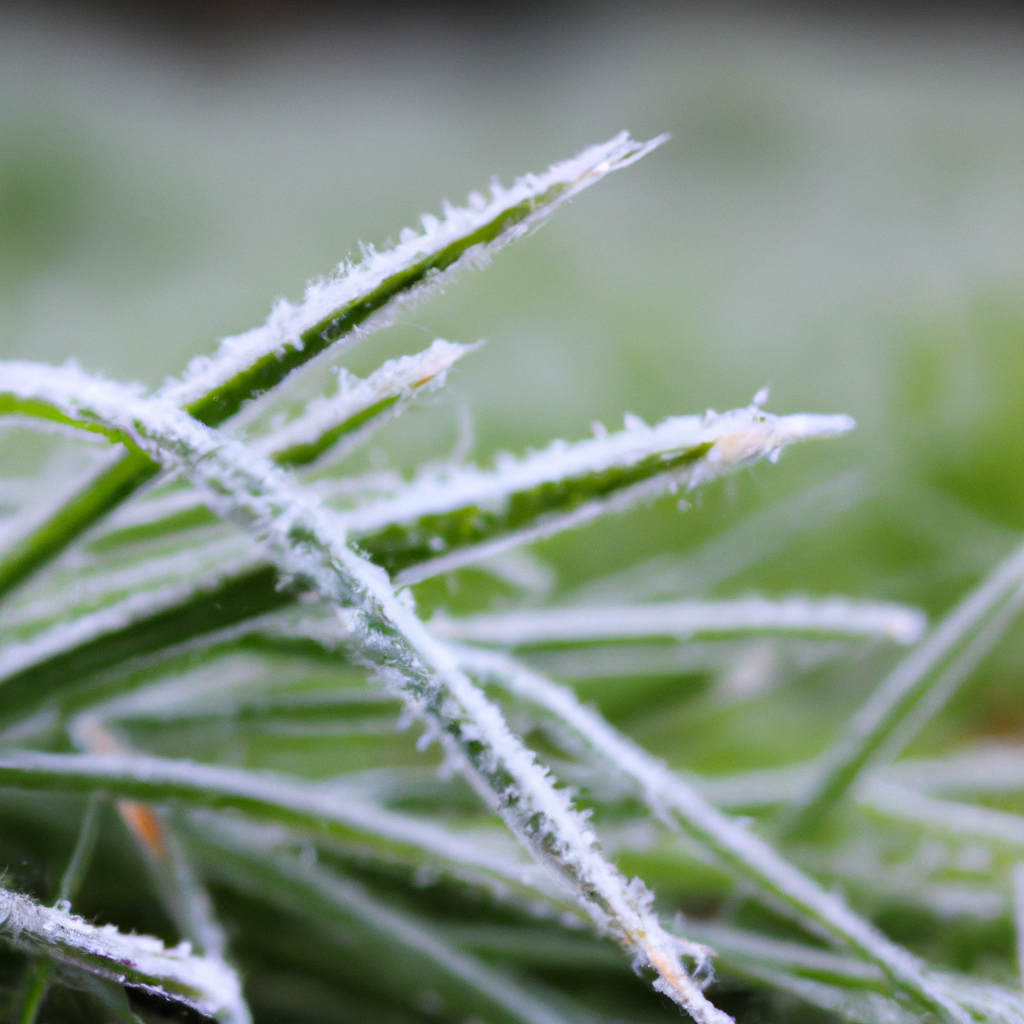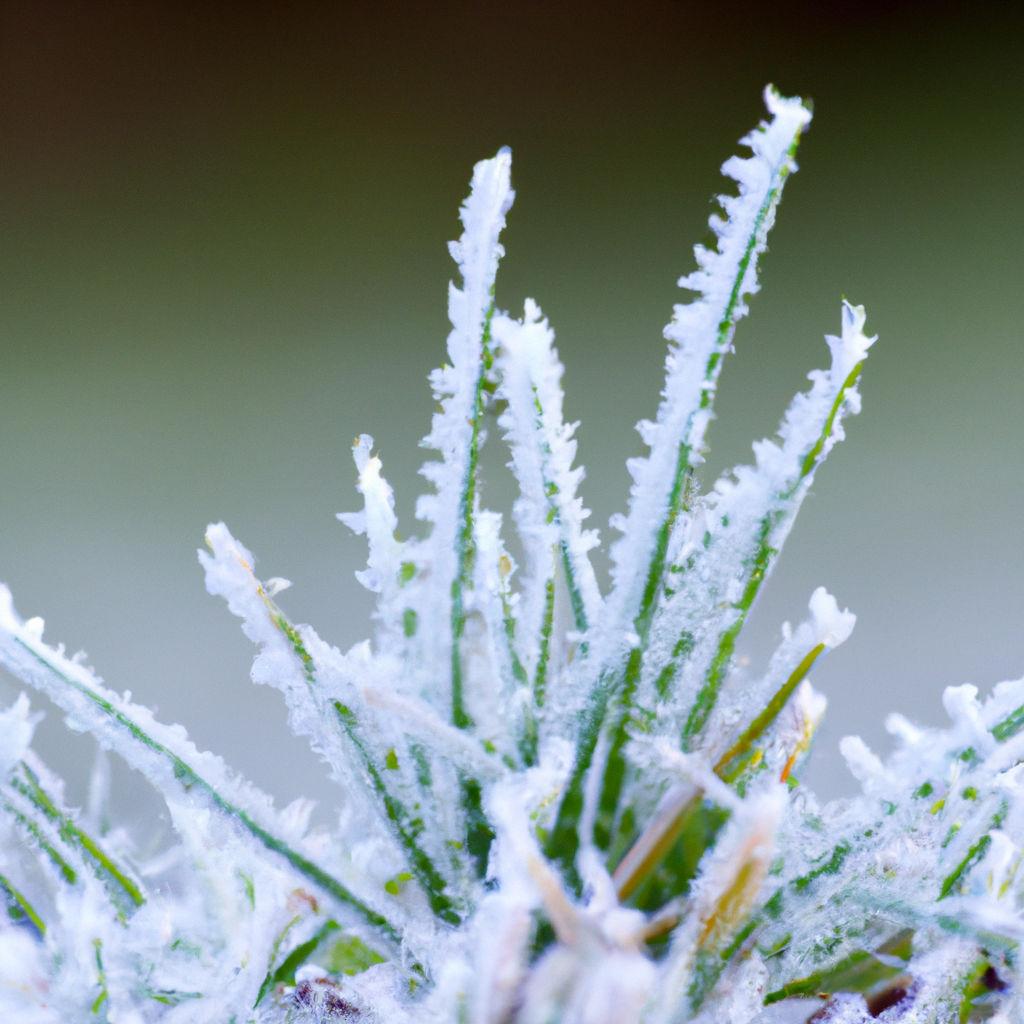Imagine a landscape that exudes tranquility and beauty, where the gentle swaying of grass creates a mesmerizing sight. Now, envision enhancing that stunning scenery with the addition of frost grass. With its silky silver blades and graceful movements, frost grass has the power to transform any ordinary landscape into a breathtaking masterpiece. In this article, you will discover the captivating reasons why frost grass should be a coveted element in your very own landscape, allowing you to create a harmonious oasis that will leave everyone in awe. Get ready to unlock the secrets of this extraordinary plant and bring a touch of enchantment to your outdoor space.
Benefits of Frost Grass in Your Landscape
1. Adds texture and visual interest
Frost grass, also known as northern sea oats, Japanese forest grass, and purple fountain grass, adds texture and visual interest to your landscape. The slender, arching blades of frost grass create a soft, flowing effect that adds movement and adds depth to the overall design. Whether used as a focal point, accent plant, or as part of a mass planting, frost grass brings a unique and captivating element to any garden.
2. Provides year-round color
One of the greatest benefits of frost grass is its ability to provide year-round color in your landscape. While many grasses turn brown and go dormant in the winter months, frost grass retains its vibrant green color even in the colder seasons. This makes it an excellent choice for adding a pop of color to your garden during the dreary winter months when other plants may be lacking in vibrancy.
3. Enhances wildlife habitat
Frost grass is not only visually appealing but also beneficial for wildlife. The flowing seed heads of northern sea oats provide food for birds, attracting them to your garden and creating a thriving habitat. Japanese forest grass, with its dense foliage, offers shelter for beneficial insects such as ladybugs and lacewings, which can help control garden pests. By incorporating frost grass into your landscape, you are creating a welcoming space for a variety of wildlife.
4. Adds movement and sound
The soft, swaying movement of frost grass adds a sense of tranquility and dynamic energy to your landscape. As the wind rustles through the grass, it produces a soothing sound – similar to a gentle whisper. This natural element can create a peaceful atmosphere in your garden and can be particularly enjoyable when positioned near seating areas or outdoor living spaces where you can sit back, relax, and enjoy the soothing sights and sounds of nature.
5. Requires low maintenance
If you’re looking for a low-maintenance plant for your landscape, frost grass is an excellent choice. These grasses are known for their ability to thrive in various environments and require minimal care. They are resistant to pests and diseases and are tolerant of a wide range of soil conditions. Frost grass does well in both full sun and partial shade, making it suitable for a variety of garden locations. With minimal watering, pruning, and fertilizing needs, maintaining frost grass in your landscape is hassle-free.
6. Thrives in various environments
Frost grass is highly adaptable and can thrive in a variety of environments. Whether you have a sunny garden, a shady area, or a mix of both, there is a variety of frost grass that will suit your needs. The different varieties, such as northern sea oats, Japanese forest grass, and purple fountain grass, have varying sunlight and water requirements, allowing you to choose the best fit for your specific landscape conditions. This versatility makes frost grass an ideal choice for homeowners looking to add visual interest and color to their gardens.
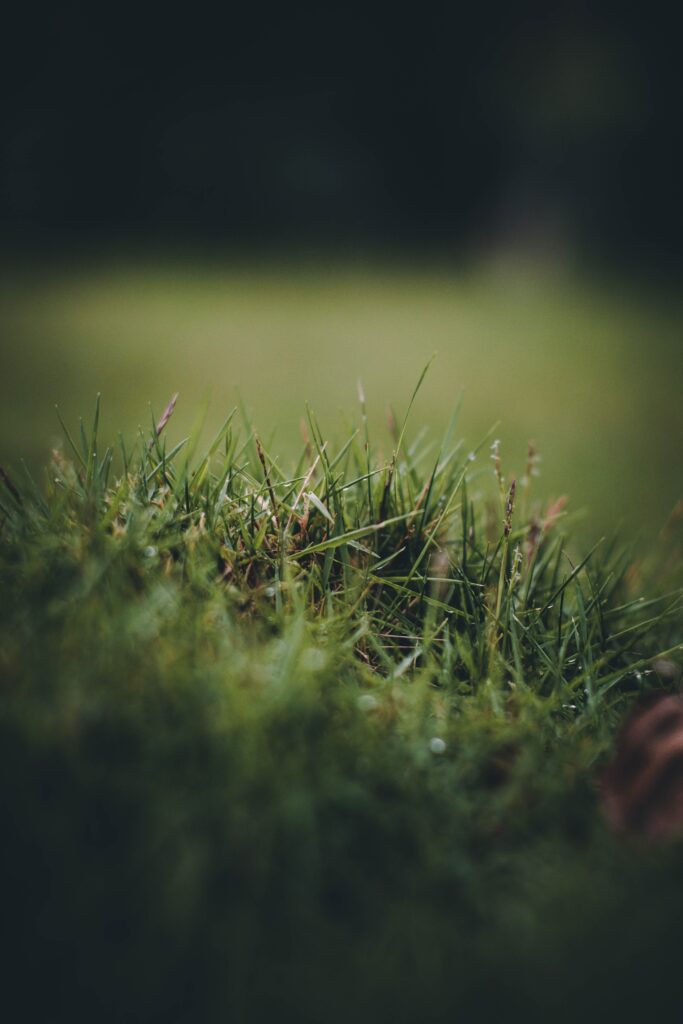
Different Varieties of Frost Grass
1. Northern Sea Oats (Chasmanthium latifolium)
Northern sea oats, also called river oats or inland sea oats, is a popular variety of frost grass known for its distinctive seed heads. These oat-like seed heads start off green and eventually turn bronze in the fall, adding interest and unique visual appeal to your landscape. Northern sea oats are shade-tolerant and prefer consistently moist soil, making them a great choice for gardens with partly shaded areas or near water features.
2. Japanese Forest Grass (Hakonechloa macra)
Japanese forest grass is a graceful and delicate variety of frost grass that adds elegance to any garden. Its slender, arching blades come in shades of green, gold, or variegated, creating a beautiful contrast to other plants. Japanese forest grass prefers partial shade and consistently moist soil, making it an excellent choice for woodland gardens or areas with dappled sunlight. It also makes an eye-catching accent plant when paired with darker foliage or flowering plants.
3. Purple Fountain Grass (Pennisetum setaceum ‘Rubrum’)
Purple fountain grass is a striking variety of frost grass known for its deep purple foliage and dramatic plumes. This ornamental grass adds a bold splash of color to your landscape and can be used as a focal point or accent plant. Purple fountain grass thrives in full sun and requires well-draining soil. It is often used in tropical or Mediterranean-style gardens to create a vibrant and exotic atmosphere.

Design Ideas for Incorporating Frost Grass
1. Focal point or accent plant
Frost grass can be used as a striking focal point or accent plant in your landscape design. Its unique texture and vibrant colors can draw attention and add visual interest to any garden. Whether planted in a container on a patio, as a solitary specimen in a flower bed, or placed strategically among other plants, frost grass is sure to make a statement.
2. Border or edging plant
Frost grass is an excellent choice for creating borders or edging in your garden. The soft, flowing blades of the grass can be used to define pathways, separate garden beds, or outline specific areas. Whether you opt for the taller varieties like purple fountain grass or the shorter and more compact Japanese forest grass, frost grass can create a neat and visually appealing border that adds structure to your landscape.
3. Mass planting for groundcover
For larger areas that require coverage, consider using frost grass as a mass planting for groundcover. The dense foliage and graceful movement of the grasses can create a cohesive and harmonious look, especially when used in larger open spaces or slopes. For a more natural and organic feel, mix different varieties of frost grass together to create a captivating tapestry of color and texture.
4. Container or patio planting
Frost grass can be grown in containers or pots, making it an excellent choice for patio and balcony gardens. The slender, arching blades of the grass offer an elegant and airy look to any container arrangement. Mix and match different varieties of frost grass with colorful annuals or perennials to create a stunning display that can be enjoyed right outside your door.
5. Water feature companion
The graceful movement and soft textures of frost grass make it an ideal companion for water features such as ponds, fountains, or even small waterfalls. The reflection of the grasses in the water enhances the overall visual appeal and provides a soothing ambiance. Plant frost grass near the edges of the water feature, allowing the grass to gently sway with the motion of the water, creating a harmonious and relaxing atmosphere.
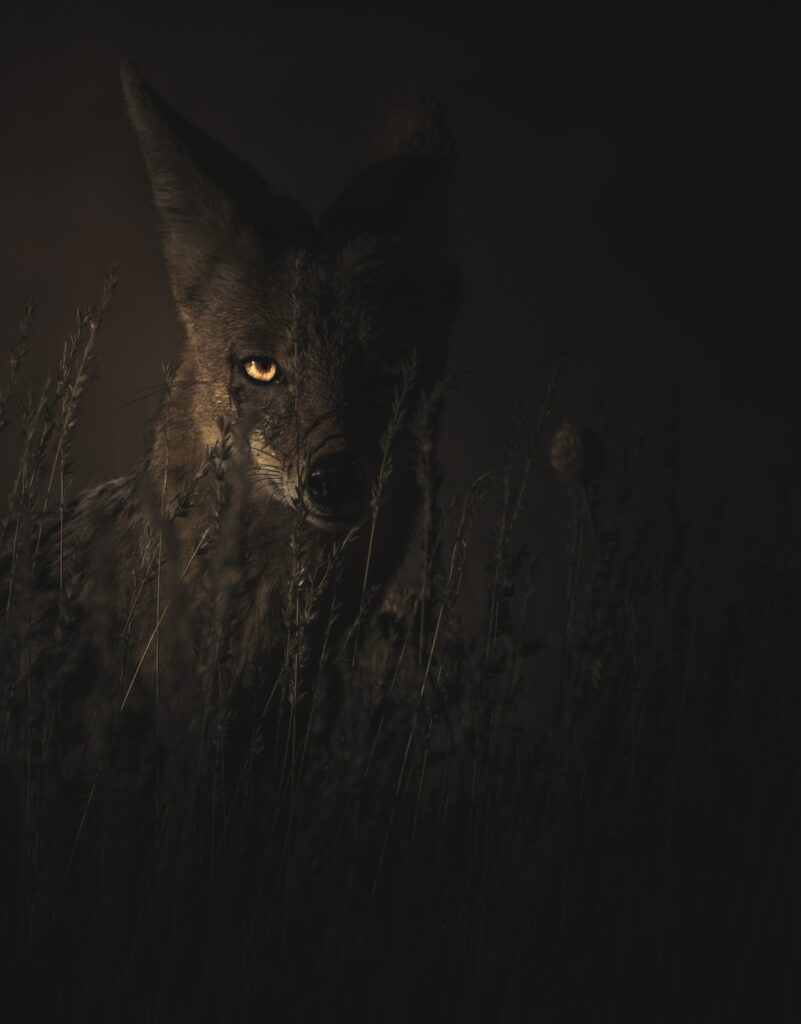
Care and Maintenance of Frost Grass
1. Planting and site selection
When planting frost grass, choose a location that matches the sunlight and moisture requirements of the specific variety. Some frost grasses, such as purple fountain grass, prefer full sun, while others, like Japanese forest grass, thrive in partial shade. Prepare the soil by loosening it and adding organic matter to improve drainage and fertility. Dig a hole slightly larger than the root ball of the plant, place the grass in the hole, and backfill with soil. Water thoroughly after planting.
2. Watering requirements
Frost grass is generally low maintenance when it comes to watering. While these grasses are tolerant of varying moisture conditions, they prefer consistently moist but well-draining soil. Water deeply and regularly during dry spells or prolonged periods of drought, particularly in the establishment phase. Monitor the soil moisture and adjust watering accordingly to ensure the plants remain healthy and vibrant.
3. Pruning and division
Frost grasses generally require minimal pruning. In late winter or early spring, before new growth emerges, cut back the previous year’s foliage to the ground to allow for fresh growth. If the grass becomes too large or starts to look untidy and overcrowded, it can be divided every few years. Dig up the clump, separate it into smaller sections, and replant them in appropriate locations.
4. Fertilizing needs
Frost grasses are not heavy feeders and can thrive in average garden soil without additional fertilization. However, to promote healthy growth and vibrant colors, you can apply a slow-release balanced fertilizer in early spring. Follow the manufacturer’s instructions for proper application rates and timings. Avoid over-fertilizing, as this can lead to excessive leaf growth and weak stems.
5. Winter protection
While frost grass is generally cold-hardy, some varieties may benefit from a little extra winter protection, especially in colder regions. Before winter sets in, add a layer of mulch around the base of the plants to insulate the roots and protect them from freezing temperatures. This layer can also help retain moisture and prevent weed growth. Remove any dead foliage in the spring to allow for new growth and maintain the overall health of the grasses.
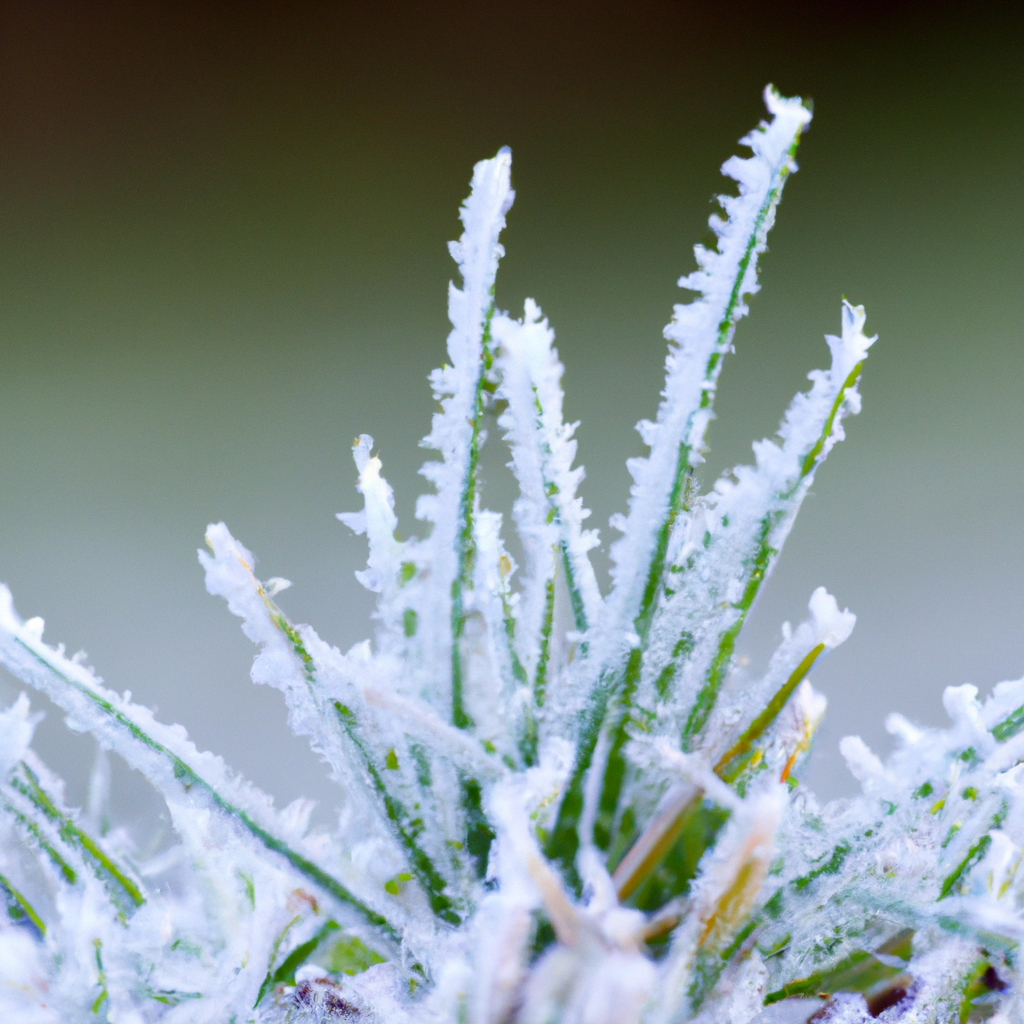
Tips for Successful Frost Grass Landscaping
1. Combine with contrasting plants
To create a visually stunning landscape, consider combining frost grass with contrasting plants. Pair the soft, flowing textures of the grasses with plants that have bold foliage or vibrant flowers. For example, the purplish-red hues of purple fountain grass can be accentuated by planting it alongside yellow or orange flowers. The contrasting colors and textures will create a dynamic and eye-catching display.
2. Consider height and form
When incorporating frost grass into your landscape, consider the height and form of the different varieties. Taller grasses like purple fountain grass can serve as a backdrop or focal point, while shorter grasses like Japanese forest grass can be used as a border or groundcover. By varying the heights and forms of the grasses, you can add depth and dimension to your garden, creating a visually appealing and harmonious space.
3. Use in shade or part shade areas
Frost grasses are versatile and can thrive in both full sun and partial shade. If you have shaded areas in your landscape, consider using varieties like Japanese forest grass, which prefer partial shade and can add interest to areas with less sunlight. These shade-loving varieties can be planted under trees, along north-facing walls, or in any location where sunlight is limited but you still want to have a vibrant and visually appealing garden.
4. Choose the right soil
Proper soil selection is essential for the success of frost grass in your landscape. Ensure the soil is well-draining, as these grasses do not tolerate standing water or waterlogged conditions. Amending the soil with organic matter, such as compost or well-rotted manure, can improve drainage and fertility. Conduct a soil test to determine the pH and fertility levels of the soil and make any necessary adjustments to provide the ideal growing conditions for your frost grasses.
5. Utilize proper spacing
When planting frost grasses, be mindful of their growth habits and give them adequate space to spread and grow. Planting them too close together can lead to overcrowding, increasing the risk of disease and limiting their overall growth potential. Follow the spacing recommendations provided by the specific variety and give the grasses room to flourish and showcase their natural form and beauty.
Incorporating frost grass into your landscape can provide numerous benefits, from adding texture and visual interest to enhancing wildlife habitat. With their year-round color, low maintenance requirements, and ability to thrive in various environments, frost grasses are an excellent choice for any garden. By selecting different varieties, such as northern sea oats, Japanese forest grass, and purple fountain grass, and incorporating them into various design ideas, such as focal points, borders, and mass plantings, you can create a visually stunning and inviting landscape. Remember to provide proper care and maintenance, including planting in suitable locations, watering regularly, pruning as needed, and protecting the grasses during winter. By following these tips and utilizing frost grass effectively in your landscaping, you can create a beautiful and captivating outdoor space that will be enjoyed for years to come.
